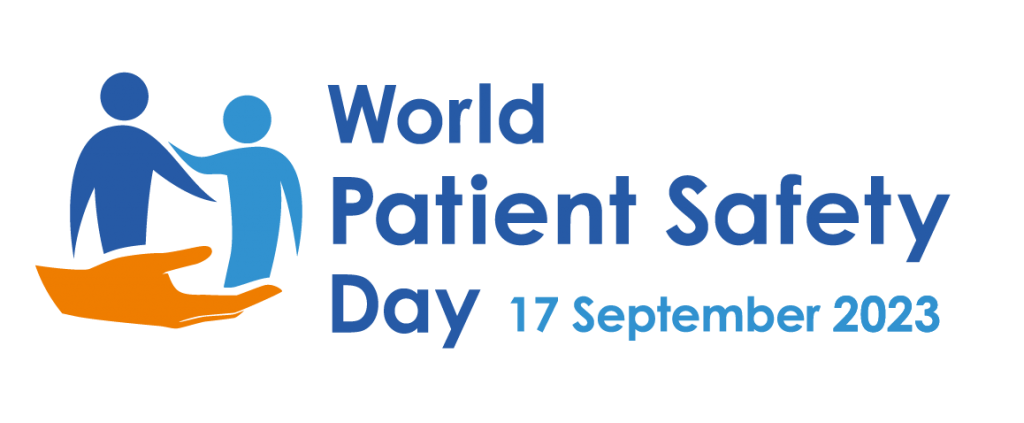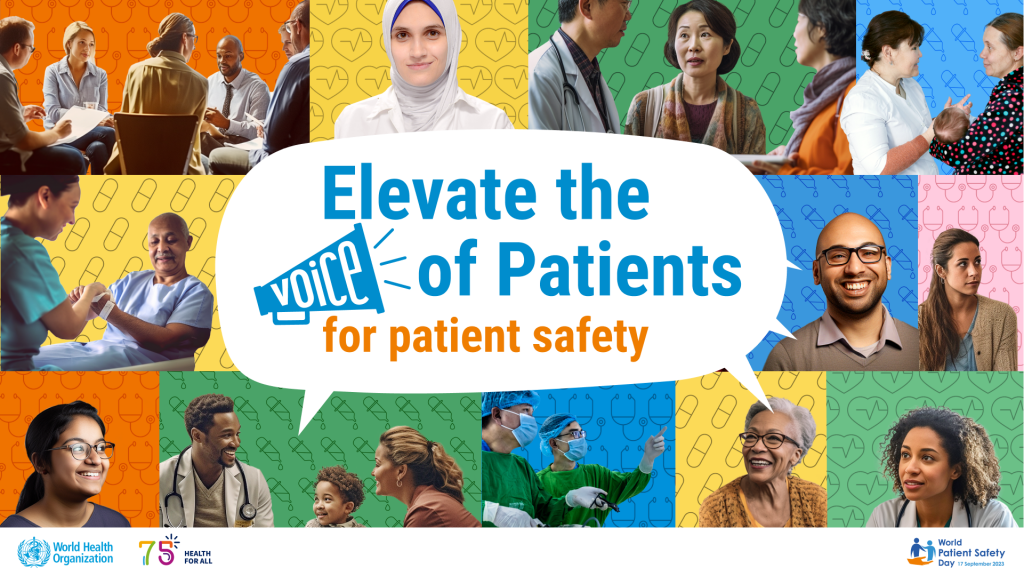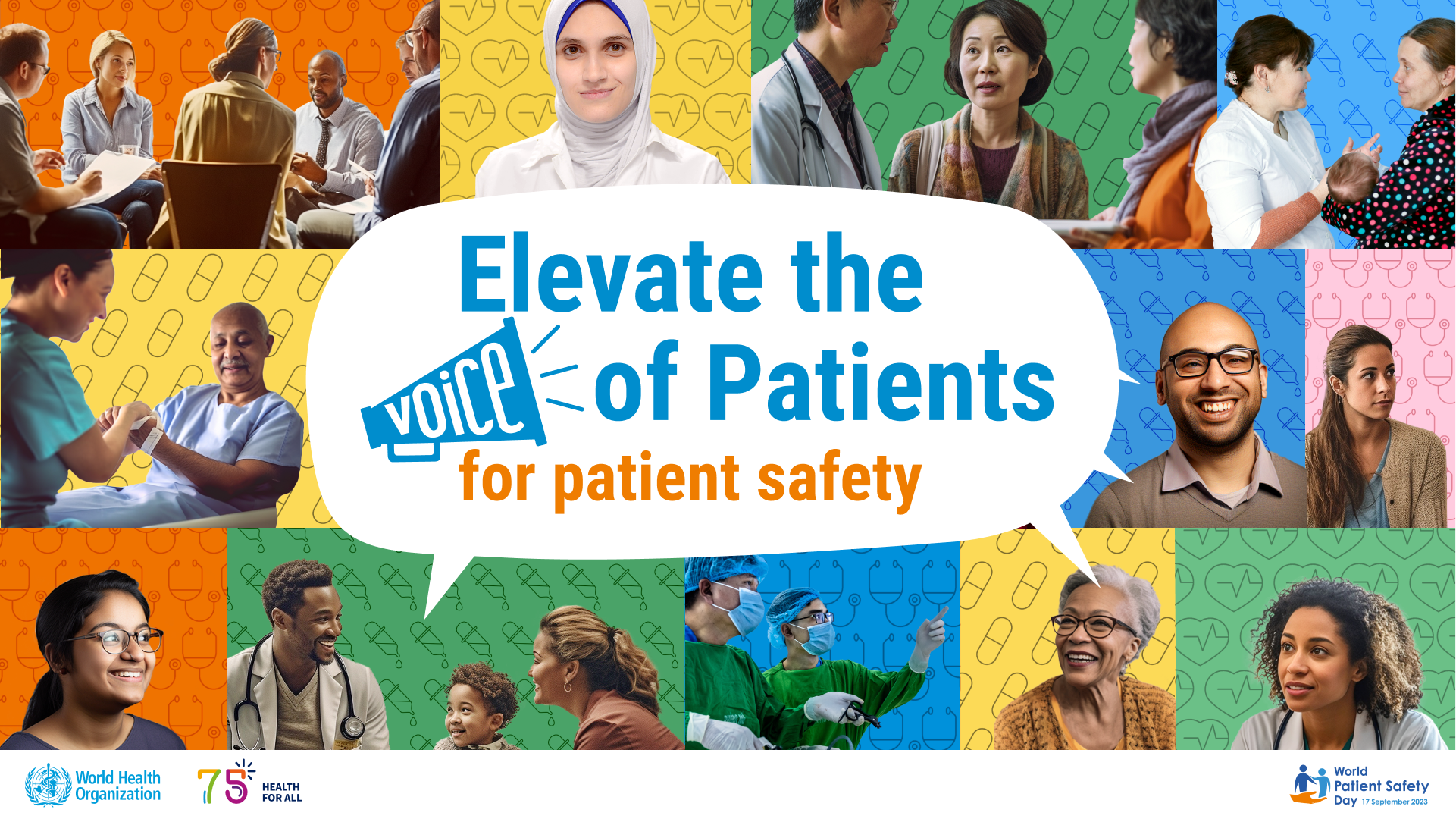International Patient Safety Day or World Patient Safety Day is an annual observance that focuses on raising awareness and promoting actions to improve patient safety in healthcare settings worldwide. The day serves as a reminder of the importance of patient safety and the need to continuously work towards reducing medical errors, preventable harm, and adverse events in healthcare.

Key goals and activities associated with World Patient Safety Day typically include:
Raising Awareness: Healthcare organizations, professionals, and patient advocacy groups use this day to highlight the importance of patient safety, emphasizing the impact of medical errors and adverse events on patients and their families.
Education and Training: Many institutions use this day to provide education and training to healthcare providers on best practices for patient safety, such as infection control, medication safety, and communication with patients.
Patient Engagement: Encouraging patients to become active participants in their healthcare and advocate for their safety is a crucial aspect of World Patient Safety Day. This may involve educating patients about their rights, encouraging them to ask questions, and involving them in the decision-making process.
Quality Improvement Initiatives: Healthcare facilities often use this day as an opportunity to review and strengthen their patient safety protocols, policies, and procedures. They may also share best practices and success stories in patient safety improvement.
Collaboration: World Patient Safety Day fosters collaboration among healthcare organizations, professionals, government agencies, and patient advocacy groups to work together towards common patient safety goals.
HISTORY OF PATIENT SAFETY DAY
World Patient Safety Day, observed on September 17th each year, has its roots in a global initiative to raise awareness about patient safety and reduce medical errors. While the exact history of International Patient Safety Day might not be as extensive as some other established international observance days, it is part of a broader movement to prioritize patient safety in healthcare.
Here’s a brief history of how World Patient Safety Day came into existence:
- WHO World Alliance for Patient Safety (2004): The World Health Organization (WHO) established the World Alliance for Patient Safety in 2004, recognizing patient safety as a global health priority. The alliance aimed to foster international collaboration in reducing patient harm in healthcare.
- First Global Patient Safety Challenge (2005): As part of the World Alliance for Patient Safety, the WHO launched its first Global Patient Safety Challenge in 2005. This initiative focused on reducing healthcare-associated infections, emphasizing hand hygiene as a critical factor in patient safety.
- Global Observance of Patient Safety Day (2005): The WHO designated September 17, 2005, as the first Global Observance of Patient Safety Day to coincide with the launch of the Global Patient Safety Challenge. This observance aimed to draw attention to patient safety issues worldwide.
While the observance may not have a lengthy history, it represents a significant commitment to patient safety on a global scale. Each year, the WHO, along with various national and international organizations, chooses a theme related to patient safety to guide the activities and discussions on World Patient Safety Day. These themes are often aligned with pressing issues and challenges in healthcare safety, helping to drive progress in this critical area.
WORLD PATIENT SAFETY DAY 2023
For 2023, the WHO chose the theme: “Engaging patients for patient safety“,
in recognition of the crucial role patients, families and caregivers play in the safety of health care.
Evidence shows that when patients are treated as partners in their care, significant gains are made in safety, patient satisfaction and health outcomes. By becoming active members of the health care team, patients can contribute to the safety of their care and that of the health care system as a whole.
Through the slogan “Elevate the voice of patients!”, WHO calls on all stakeholders to take necessary action to ensure that patients are involved in policy formulation, are represented in governance structures, are engaged in co-designing safety strategies, and are active partners in their own care. This can only be achieved by providing platforms and opportunities for diverse patients, families, and communities to raise their voice, concerns, expectations and preferences to advance safety, patient centeredness, trustworthiness, and equity
World Health Organization

GLOBAL ADVANCES IN PATIENT SAFETY
Patient safety has seen significant advances over the years as healthcare organizations, professionals, and researchers have worked to identify and address potential risks and improve the quality of care. Some notable advances in patient safety include:
- Electronic Health Records (EHRs): The widespread adoption of EHRs has improved patient safety by reducing the risk of errors related to paper records. EHRs enable healthcare providers to access a patient’s medical history, medication lists, and relevant information quickly and accurately.
- Medication Safety: Advances in medication safety include the use of computerized physician order entry (CPOE) systems, barcode scanning, and automated medication dispensing to reduce medication errors. Additionally, medication reconciliation processes help ensure accurate medication lists during transitions of care.
- Hand Hygiene Campaigns: Initiatives to promote proper hand hygiene among healthcare providers have led to a significant reduction in healthcare-associated infections, which are a common cause of patient harm.
- Checklists and Surgical Safety: The implementation of surgical safety checklists, inspired by the World Health Organization’s Surgical Safety Checklist, has reduced surgical complications and improved patient outcomes.
- Patient Engagement: An emphasis on patient engagement and shared decision-making has empowered patients to become active participants in their care, ask questions, and advocate for their own safety.
- Simulation Training: Healthcare professionals benefit from simulation training programs that allow them to practice and refine their skills in a controlled environment. Simulation helps improve teamwork and communication and prepare providers for critical situations.
- Telemedicine and Remote Monitoring: Telemedicine and remote monitoring technologies have expanded access to healthcare services and enabled more timely interventions, particularly in situations where patients are at risk.
- Root Cause Analysis and Reporting Systems: Healthcare organizations have established mechanisms for reporting near misses, adverse events, and potential safety concerns. Root cause analysis helps identify the underlying causes of incidents, allowing for preventive actions.
- Patient Safety Culture: A culture of safety has become a priority, encouraging healthcare organizations to create an environment where staff feel comfortable reporting safety concerns without fear of retribution. This culture fosters transparency and continuous improvement.
- National and International Patient Safety Campaigns: Organizations like the World Health Organization (WHO) have launched global patient safety campaigns, raising awareness about critical safety issues and driving action on an international scale.
- Standardized Protocols and Guidelines: The development and adoption of standardized clinical protocols and evidence-based guidelines help ensure consistent and safe care practices across healthcare settings.
- Healthcare Accreditation and Regulation: Regulatory bodies and accreditation organizations enforce standards and guidelines related to patient safety, motivating healthcare providers to comply with best practices.
These advances in patient safety reflect a commitment to improving the quality of healthcare and reducing the risks and harms associated with medical care. While challenges persist, ongoing research, innovation, and collaboration continue to drive progress in patient safety efforts worldwide.
- Taiwan at the Forefront of Green Economy - July 26, 2024
- Discover Tohoku in the Summer - July 25, 2024
- Back-to-School Tips: How to Make the Most of What You Already Have - July 25, 2024








